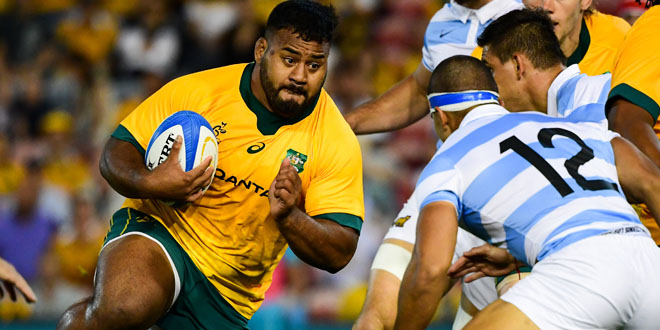Australia 2027 is to be an expanded Rugby World Cup from 20 to 24 competitors. This will not mean more host venues or cities, however, as the tournament is to be downsized to have eight host cities with Sydney hosting matches in two stadiums. This is a reduction compared to Rugby World Cup 2003 which featured eleven venues in ten Australian cities.
Indications are that Rugby Australia sought to stage the tournament in nine venues including two stadiums in Melbourne. The Melbourne Cricket Ground (MCG) and the Melbourne Rectangular Stadium were two of nine potential match venues included on the Men’s RWC 2027 Team Bases Expression of Interest (EOI) Opportunity.
Neither Melbourne venue will play host to Rugby World Cup 2027 matches. Code Sports reported that the state of Victoria lost hosting rights to Rugby World Cup 2027. The MCG had been a contender to host the tournament final. Instead, “a futile protest from the state government” sees Melbourne missing out altogether.
In a repeat of Rugby World Cup 2003, Sydney will play host to the Rugby World Cup 2027 Final. The venue will again be Stadium Australia. In 2003, the 2000 Olympic Stadium was used for three pool matches, both Semi Finals, the Bronze Final and the Final.
Stadium Australia and the Sydney Football Stadium (SFS) were included in the Men’s RWC 2027 EOI. The other venues were the aforementioned Melbourne stadiums plus Adelaide, Brisbane, Newcastle, Perth, and Townsville.
The loss of Melbourne greatly affects Australia’s hosting structure of the tournament. Not only was the city, which happens to be Australia’s second largest, on path to host matches at two stadiums, it was also very busy the last time Australia hosted a Rugby World Cup. Melbourne’s Docklands Stadium hosted five pool matches and two quarter finals.
Alternatives are needed to host matches in place of the two intended Melbourne stadiums. Although Australia has vibrant cities, organizing the World Cup without Melbourne is easier said than done. For instance, Perth is a possibility for quarter finals but it is a flight of more than four hours from Sydney.
As was the case in 2003, Brisbane will again host a quarter final in 2027. It is unclear whether this means one or two quarter finals. For the 2003 tournament Brisbane and Melbourne hosted two each. Brisbane and Townsville were the Queensland cities that hosted matches. Townsville’s North Queensland Stadium was included as a potential match venue for Australia 2027.
Perth Stadium was the one venue from Western Australia included. The stadium is officially large enough to host the final and will the Wallabies will play in the 2027 tournament opener in Perth. Adelaide and Newcastle were the other two potential matches named. The former hosted matches in 2003 but the latter did not.
Adelaide, Newcastle and Townsville are reported to have secured key pool matches though there has been no public comment to suggest that one or more of them are in the frame to host quarter finals. They do, however, combine with Brisbane, Perth and Sydney to account for seven of the nine venues.
Assumably, the tournament organizers will replace the Melbourne stadiums with two venues in separate cities. Based on factors such as city size, location and accessibility, and rugby hosting history the two venues are likely to be Canberra and Gold Coast.
This reduces stadium capacity significantly. It is a change from playing matches at the MCG (100,024) and Melbourne Rectangular Stadium (30,050) to Canberra (25,011) and Gold Coast (27,690). It means that in addition to Rugby World Cup 2027 being played in fewer stadiums and cities than Rugby World Cup 2003, Australia 2027 also has downsized venues by staging the event without Melbourne. As such, Wembley Stadium’s attendance of 89,267, for Ireland vs Romania in 2015, will remain the world record.
Nine venues in eight cities is now the expectation. This appears to be with Adelaide, Brisbane, Canberra, Perth, Sydney, and Townsville as returning host cities from Rugby World Cup 2003 and Gold Coast and Newcastle are new cities. It means Melbourne, Gosford, Launceston, and Wollongong miss out in 2023 after having hosted matches in 2003.
In terms of size, the venue selection sees seven of Australia’s eight largest cities included: Sydney (2 stadiums), Brisbane, Perth, Adelaide, Gold Coast, Newcastle and Canberra. They are listed in the table below together with capacity and the most recent test match that was played at the venue.
| CITY | VENUE | CAPACITY | LAST HOSTED WALLABIES |
| Sydney | Stadium Australia | 82,000 | vs New Zealand (2024) |
| Sydney | Sydney Football Stadium | 42,500 | vs Georgia (2024) |
| Newcastle | Newcastle International Sports Centre | 30,000 | vs Argentina (2020) |
| Brisbane | Lang Park | 52,500 | vs South Africa (2024) |
| Gold Coast | Robina Stadium | 27,690 | vs Argentina (2021) |
| Townsville | North Queensland Stadium | 25,000 | vs Argentina (2021) |
| Canberra | Bruce Stadium | 25,011 | vs Argentina (2017) |
| Adelaide | Adelaide Oval | 53,500 | vs South Africa (2022) |
| Perth | Perth Stadium | 61,266 | vs South Africa (2024) |
 Americas Rugby News Rugby news from across the Americas!
Americas Rugby News Rugby news from across the Americas!




